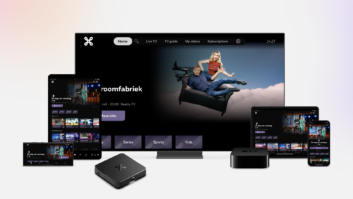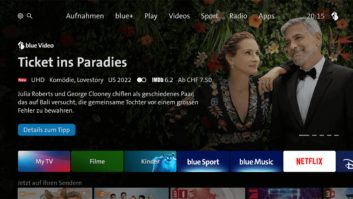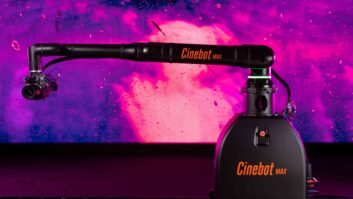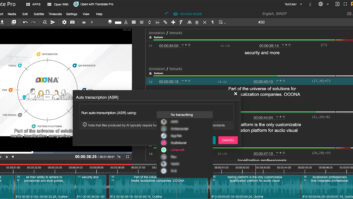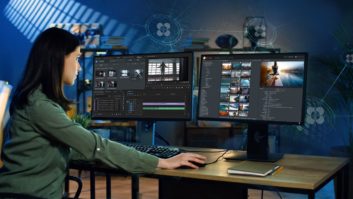
Connectivity has enabled operators to launch multiscreen services and extend the reach of their TV offering to connected consumers. However, the increase in the number of devices is also creating significant fragmentation challenges. At the top of the list, operators need to provide a seamless experience across multiple devices while ensuring that the content delivered across each device, sometimes over a wide range of networks, is protected at all levels of the media delivery chain.
Using data to better understand viewing and device habits
IDC forecasts that by 2020, there will be 1.7 megabytes of new information created every second for every human being on the planet. In addition to this abundance of information, the plethora of devices used by consumers has led to an increase in data points that operators can collate and analyse in order to develop services that adapt to the consumer. While this appears highly beneficial at first sight, the sheer number of data points can be overwhelming for operators.
Especially for OTT services, search and recommendation engines have to become highly personal to ensure that consumers get the best value from the service. For example, a fan of Orange is The New Black is more likely to be interested in Making a Murderer than cartoons. However, limiting recommendations to the ‘safe’ options that are immediately relevant to the consumer can also prevent subscribers discovering new content, which can have a negative impact on the user experience. To avoid this, operators need to be able to expand their recommendations outside traditional areas to help broaden the consumer’s horizon.
To meet the data gathering challenge, many service providers have built their own data analytics systems. However, multiscreen services are reshuffling the cards: in addition to accessing a wide range of content, leading to recommendation headaches, one person may access world news from their smartphone in the morning but watch content from streaming platforms such as Amazon Prime, Netflix and Sky Go on their laptop in the evening.
All these points add to the data challenge, leading operators to look at deploying third party data gathering and analytics solutions that integrate with their services to keep better keep track of the variations in consumer habits. These services can bridge the information that operators receive from multiple devices and paint a clearer picture of the different types of audiences and improve the quality of their recommendation engines. In addition, they open up new monetisation avenues based on the consumer’s habits, including highly personal advertising such as pre- and post roll videos on the viewer’s PVR content.
Personalising the consumer experience
Most operators are trying to crack the content personalisation code, but we strongly believe that aggregating and analysing data has an added benefit, helping operators differentiate the devices used to access content in order to design experiences that accommodate the interaction method. For example, subscribers accessing content via their TV need the interaction to adapt to a remote, as opposed to a joystick preferred by games console viewers or the finger tap of a mobile user.
While the technical challenges associated with creating a seamless experience for all these devices can appear daunting at first, they can be solved by utilising standards. At present, the responsive design features of HTML5 provide a solution to reducing development time for the user experience as they automatically scale to the device and screen, while the Digital Living Network Alliance (DLNA) facilitates interoperability between devices for secure media sharing.
As players outside the traditional broadcast and video industry enter the market, with names like Amazon and Apple becoming leading actors in the conversation, we can expect that multi-screen services will soon have to accommodate smart watches and other smart devices. Operators looking beyond the living room can find another major revolution in video technology: delivering content to the car.
The connected car conundrum
Interestingly, these data lessons can be extended outside the living room, particularly as our vehicles become connected and able to gather data themselves. Gartner estimates that by 2020, 90 per cent of cars will be connected to the internet, and car manufacturers have recognised that this opens the door to more entertainment, and the advent of driverless cars means that we can expect video delivered to passenger screens.
At CES earlier this year, car manufacturers demonstrated how the automotive and communication industries are becoming intertwined, with panoramic screens providing a range of infotainment to the passenger seat or enabling consumer smartphones to interact with the vehicle. This reinforces the idea that cars have the capacity to evolve into real life companions to support our day-to-day lives.
Connectivity plays an ever more central role, and it is now up to service providers to ensure that they harness the power of data to ensure they can bridge the gap between connected devices and entertainment. For pay-TV operators and OTT providers, this means utilising consumer data to ensure they deliver a first class experience to subscribers, while it provides the first step for the automotive sector to launch services that deliver a highly personalised experience.
By Dr Neale Foster, COO and VP of global sales, Access (pictured)
